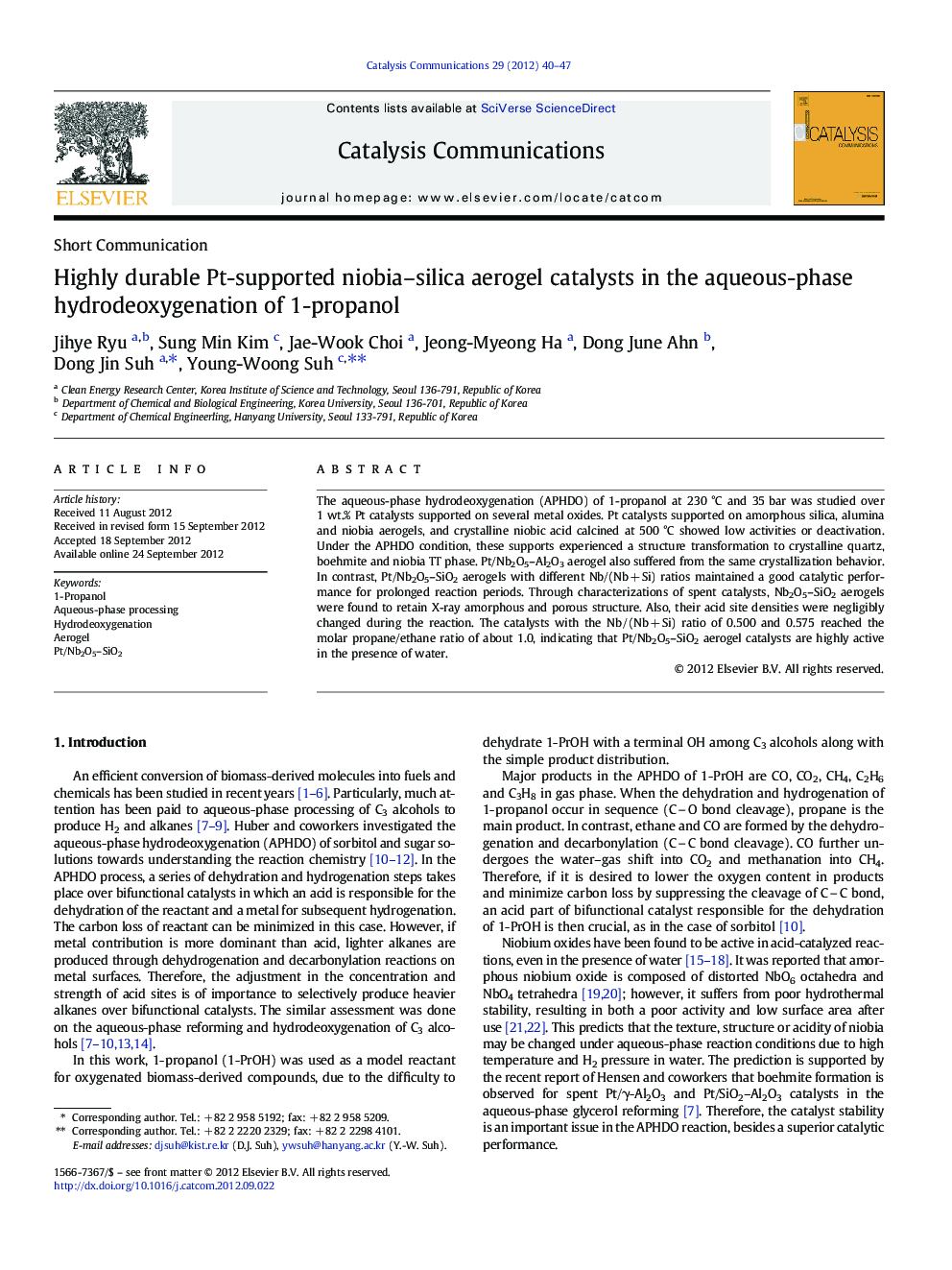| کد مقاله | کد نشریه | سال انتشار | مقاله انگلیسی | نسخه تمام متن |
|---|---|---|---|---|
| 49832 | 46769 | 2012 | 8 صفحه PDF | دانلود رایگان |

The aqueous-phase hydrodeoxygenation (APHDO) of 1-propanol at 230 °C and 35 bar was studied over 1 wt.% Pt catalysts supported on several metal oxides. Pt catalysts supported on amorphous silica, alumina and niobia aerogels, and crystalline niobic acid calcined at 500 °C showed low activities or deactivation. Under the APHDO condition, these supports experienced a structure transformation to crystalline quartz, boehmite and niobia TT phase. Pt/Nb2O5–Al2O3 aerogel also suffered from the same crystallization behavior. In contrast, Pt/Nb2O5–SiO2 aerogels with different Nb/(Nb + Si) ratios maintained a good catalytic performance for prolonged reaction periods. Through characterizations of spent catalysts, Nb2O5–SiO2 aerogels were found to retain X-ray amorphous and porous structure. Also, their acid site densities were negligibly changed during the reaction. The catalysts with the Nb / (Nb + Si) ratio of 0.500 and 0.575 reached the molar propane/ethane ratio of about 1.0, indicating that Pt/Nb2O5–SiO2 aerogel catalysts are highly active in the presence of water.
Figure optionsDownload as PowerPoint slideHighlights
► Pt/Nb2O5–SiO2 aerogels showed a superior catalytic activity for prolonged periods.
► The hydrothermal reaction condition led to the crystallization of support materials.
► SiO2 and Al2O3 aerogels were transformed into quartz and boehmite, respectively.
► Nb2O5 and Nb2O5–Al2O3 aerogels suffered from the similar crystallization behavior.
► Original properties of Nb2O5–SiO2 aerogels were maintained during the reaction.
Journal: Catalysis Communications - Volume 29, 5 December 2012, Pages 40–47